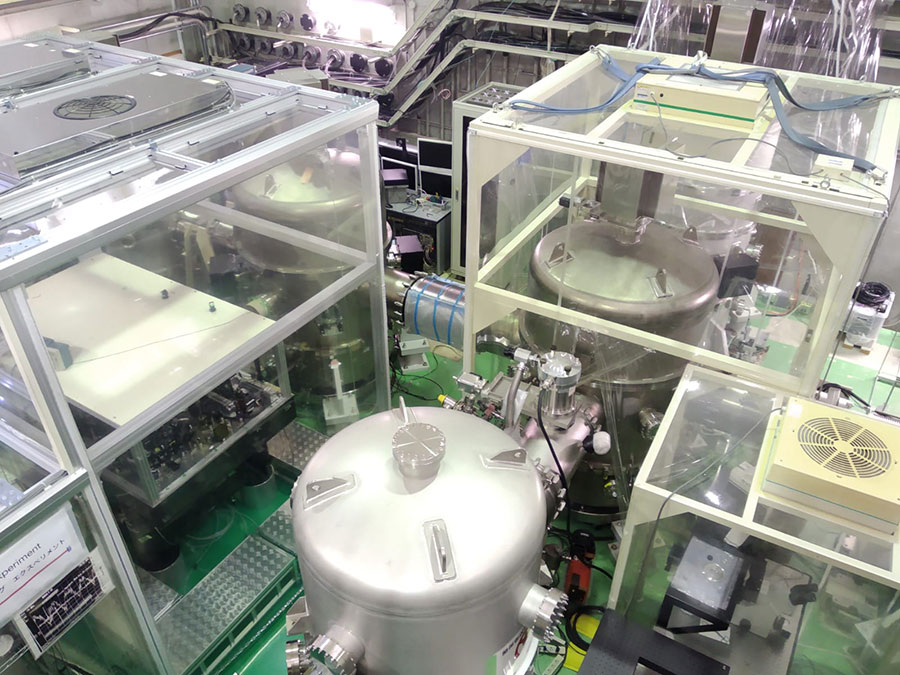Apr 29 2020
A new technique for minimizing quantum noise in detectors has been developed by scientists from the National Astronomical Observatory of Japan (NAOJ). They achieved this using the infrastructure of the former TAMA300 gravitational wave detector located in Mitaka, Tokyo.
 Vacuum chambers in the infrastructure of the former TAMA300 detector used in this experiment. Image Credit: NAOJ.
Vacuum chambers in the infrastructure of the former TAMA300 detector used in this experiment. Image Credit: NAOJ.
Thanks to the new technique, the sensitivity of the detectors, including a collaborative worldwide gravitational wave network, can now be improved, enabling them to detect even fainter waves.
TAMA300 started its observations in 2000. At that time, it was one of the world’s first large-scale interferometric gravitational wave detectors, with the highest ever sensitivity, setting a benchmark for the strength of gravitational wave signals. However, gravitational waves were actually detected for the first time by LIGO, 15 years later, in 2015.
Thereafter, there has been a huge advance in detector technology to the point where modern detectors observe multiple signals per month. The scientific outcomes of these observations are already remarkable and many more are predicted in the coming decades. Although TAMA300 is no longer part of the observations, it is still active as a testbed for new technologies to enhance other detectors.
Quantum noise produced by vacuum fluctuations of the electromagnetic fields limits the sensitivity of existing and future gravitational wave detectors at virtually all the frequencies. However, it is possible to eliminate even such intrinsic quantum noise.
The vacuum fluctuations can be controlled to enable redistribution of the quantum uncertainties, thus removing one kind of noise while increasing a different, less obstructive kind of noise. This technique is called vacuum squeezing and has already been executed in gravitational wave detectors, thereby considerably increasing their sensitivity to gravitational waves of higher frequency.
However, due to the optomechanical interaction between the mirrors of the detector and the electromagnetic field, there is a change in the vacuum squeezing effects based on the frequency. At low frequencies, vacuum squeezing tends to increase noise of the wrong kind, degrading sensitivity.
To solve this problem and realize minimal noise at all frequencies, recently, a research group at NAOJ that included members of the in-house Gravitational Wave Science Project and the KAGRA collaboration (as well as researchers of the GEO and Virgo collaborations) has shown the viability of a technique called frequency-dependent vacuum squeezing, at the frequencies useful for gravitational wave detectors.
Since the detector itself interacts with the electromagnetic fields in a different way based on the frequency, the researchers employed the infrastructure of the former TAMA300 detector to generate a field that varies itself based on frequency.
A normal (frequency-independent) squeezed vacuum field tends to get reflected off a 300-m-long optical cavity, in a way that frequency dependence is imprinted and can counteract the interferometer’s optomechanical effect.
This technique will enable enhanced sensitivity at both low and high frequencies at the same time. The study results are crucial in demonstrating technology vital to enhance the sensitivity of future detectors. It is predicted that its execution, scheduled as a near-term upgrade along with other improvements, will double the observation range of second-generation detectors.
The study outcomes were reported in a paper authored by Zhao, Y., et al., titled “Frequency-dependent squeezed vacuum source for broadband quantum noise reduction in advanced gravitational-wave detectors,” which was published recently in Physical Review Letters. A group from MIT has achieved a similar result using a 16-m-long filter cavity. Both papers were published jointly.
Journal Reference:
Zhao, Y., et al. (2020) Frequency-Dependent Squeezed Vacuum Source for Broadband Quantum Noise Reduction in Advanced Gravitational-Wave Detectors. Physical Review Letters. doi.org/10.1103/PhysRevLett.124.171101.